

As featured in
The New Zealand Listener & Sussex Life magazines
C r e a t e d b y

Text and Image
Activity 1: blackout poetry
Find words that form a mini story or poem and black out the rest, making a wonderful design.

*Idea from Jessica McGinley.
Activity 2: a word to wish for
This is a simple activity to create a word to wish for - something that could be lacking in our own life, in our community or in the world.
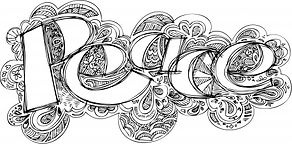
How about doing this in the form of a linocut, styrofoam print or mosaic?

'Be the change you wish to see in the world.'
Mahatma Ghandi
Activity 3: another word to wish for
Another approach to this activity:

Idea by

Activity 6: using Maslow
a) This pyramid could be printed on A3 or drawn larger on A2 paper, with each section forming a separate piece of mixed media art with hand drawn type.
People who are homeless or who have experienced the trauma of war and displacement could use words and sentences to describe their emotions and experiences in the first two tiers and use the others to visualise a positive outcome and ways they can move forwards.

b) This activity should be done in groups of four.
1. Create a large template on board then cut it out and create your pyramid.
2. Divide each side into 5 sections.
3. Create the same size triangle on a sheet of white card and divide into 5, as before.
4. Each person can work on their own template, one section at a time over five sessions, and then stick them on one of the sides of the model.
5. At the end of the session, the group can share their experiences and dreams.
Idea by Richard K Potter
Activity 7: message in a Bottle

1. Give a white piece of paper a parchment affect by putting a teabag in water and using the 'watercolour' to create a stained, sepia effect. You might want to scrunch it up a little too.
2. Scenario: The letters below are all that remains of at message you found in a bottle on the beach. Complete (write) the message.
Hel
I a
S
D
C
Y
1. On a large piece of cartridge paper, with a thick brush, paint your initials as shown below. Try different styles and be quick and spontaneous. Use black watercolour or ink.
Don't worry if most of them don't work, you only need one that appeals to you!
2. Using a thin sheet of white paper trace your chosen initials. Use masking tape to keep the paper in place. You can use your window as a light box if that helps.
3. Draw a suitable black box around it and colour in, as shown below:
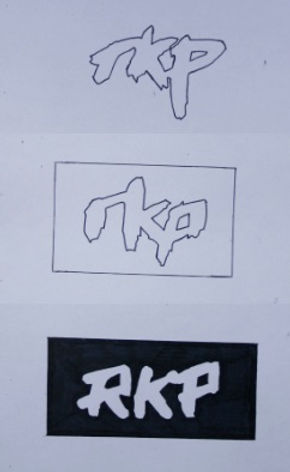
You could photocopy this for your journal and experiment with different shapes and colours. You can also scan it into your computer and use it for printed material of marketing if you decide to hold an exhibition for instance.
Activity by Richard K Potter.
1. Create your own Haiku that reflects a moment in time by the sea or in the countryside.
2. Create an expressive watercolour piece that reflects your Haiku and hand letter it onto your watercolour to create a 'text and image' piece.
3. Add stitching to it to create a mixed media piece.
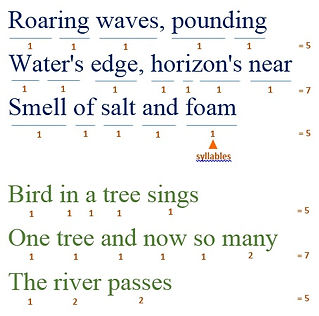
Haikus by Richard K Potter.
Haiku is a form of Japanese poetry in three lines that uses a set amount of syllables per line - usually 5/7/5 or 3/5/3. Each one is written in the present tense about ones immediate experience in nature.
Activity 8: write a short poem
Write a short poem as part of a mixed media art piece.
Your poem doesn't have to rhyme or follow conventions so enjoy writing it for it's own sake.
Here's my attempt, to give meaning to C4W.

Activity 4: Haiku
Activity 5: creating your own logo

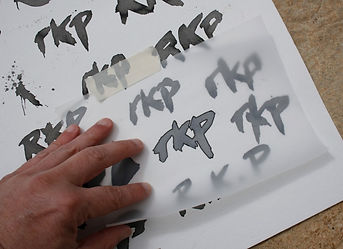
To create your own hand lettered piece or banner it is worth printing out a sheet of Times New Roman and Helvetica, for instance, and look at these fonts carefully to see how they are designed.
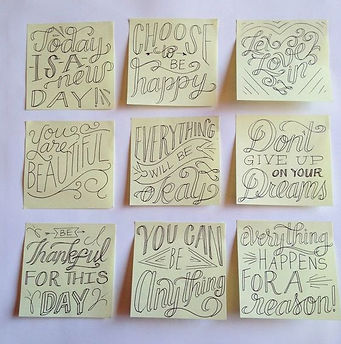
1. To create your own social comment(s) in your journal or on a series of post-it notes, as above.
2(a). Create a piece of 'blackout poetry' (Activity 1) and; 2(b). Use the words you have chosen as inspiration for a large hand-lettered piece on A4 paper.
Artist unknown.

